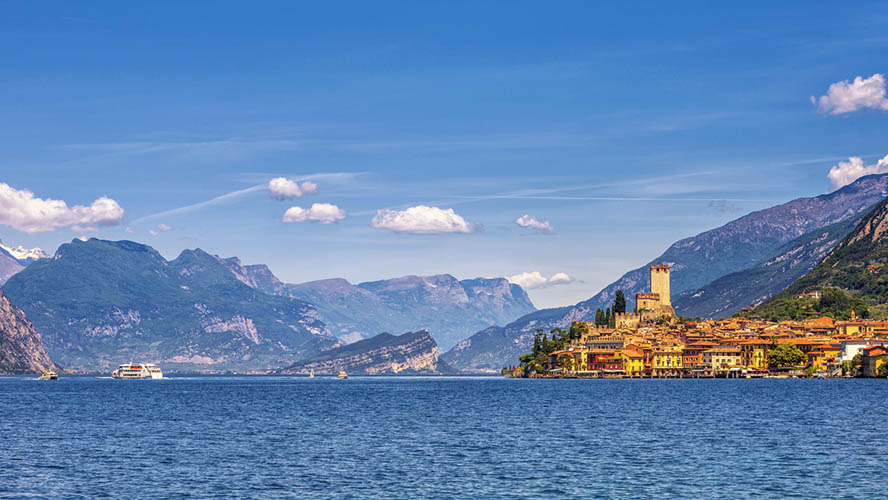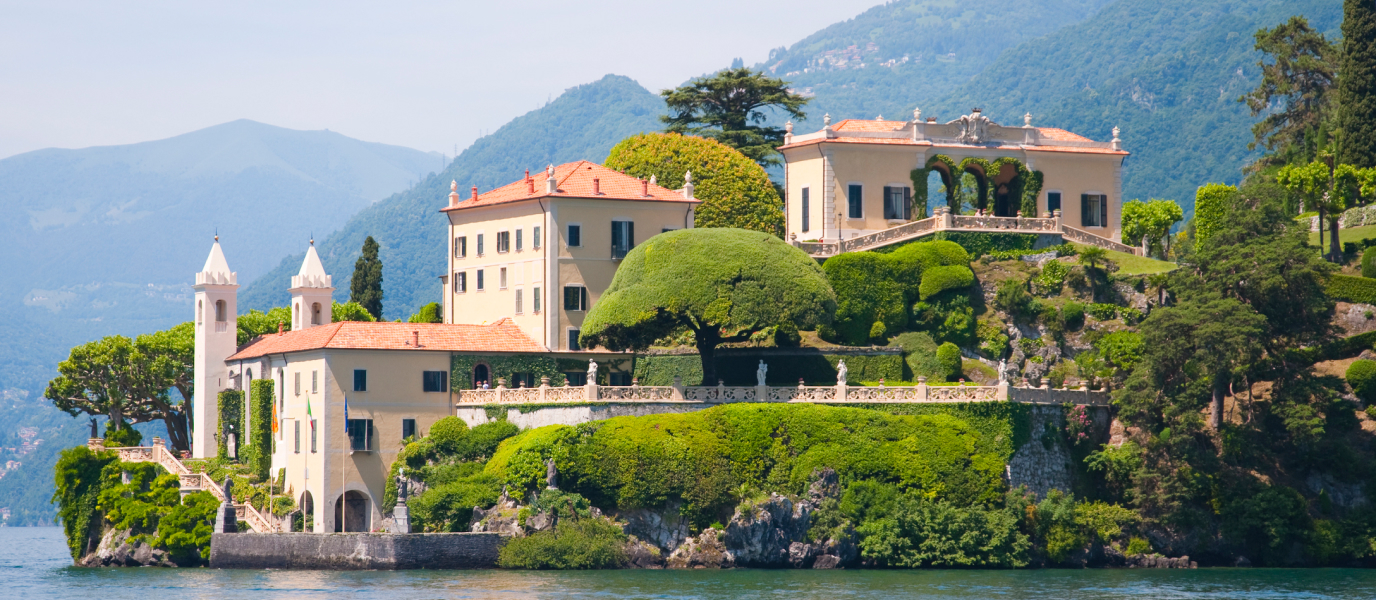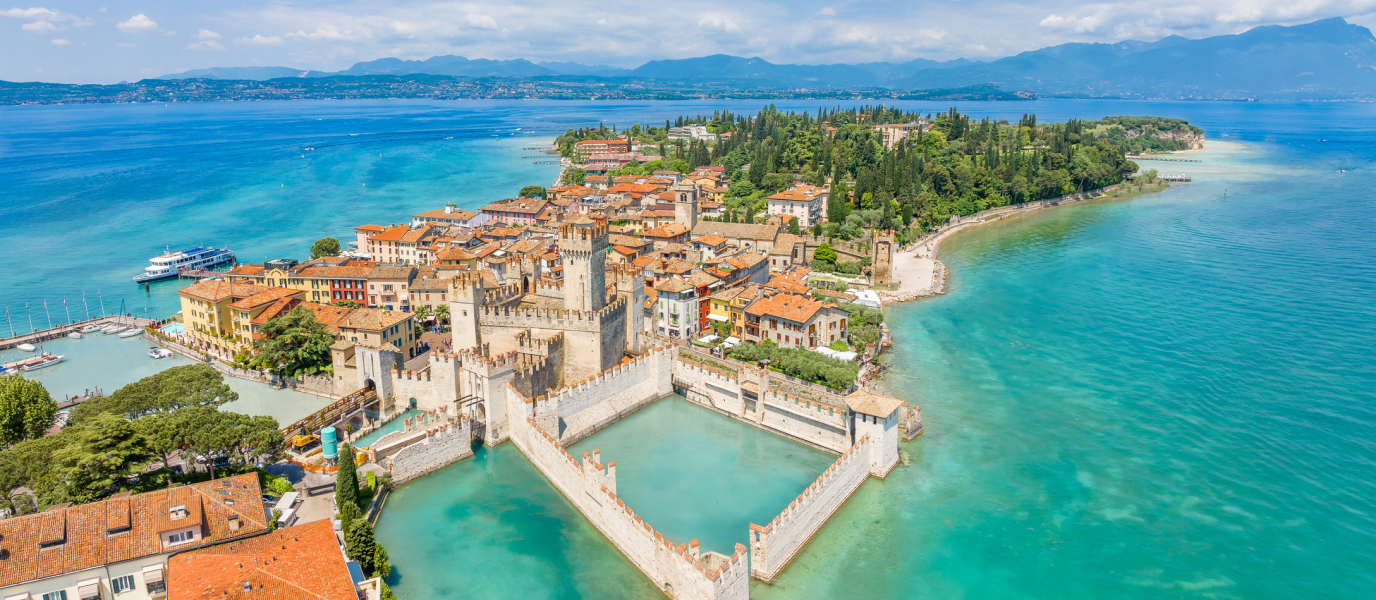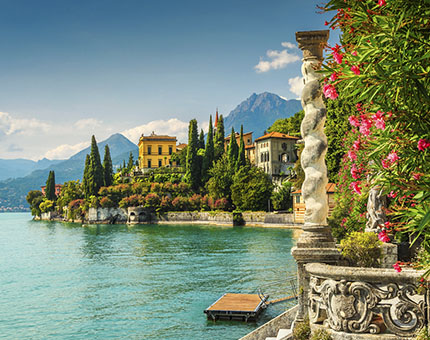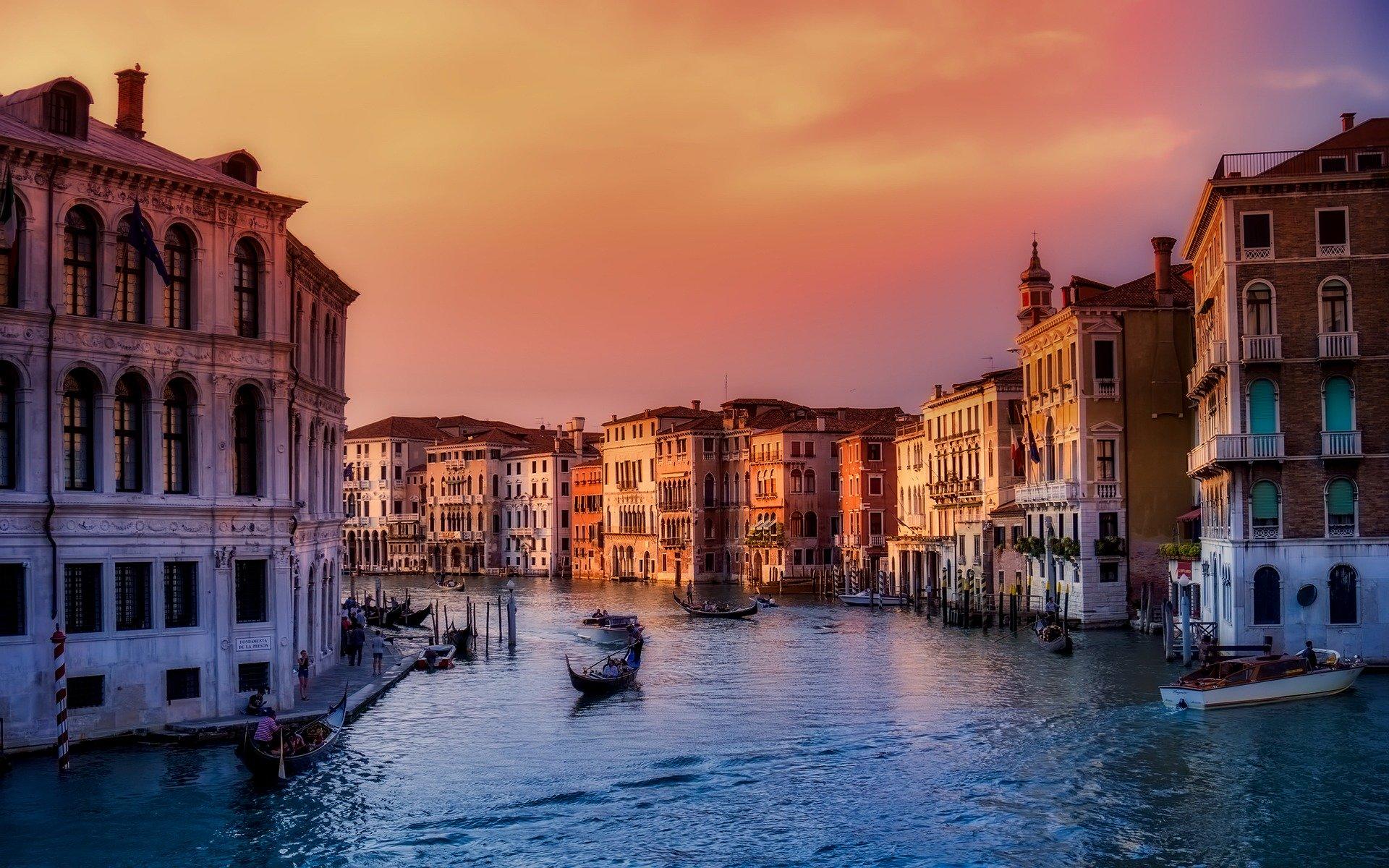There’s plenty of history in Brescia, the second largest city in Lombardy after Milan, and it has Celtic, Roman, medieval and Renaissance remains. Its most important attraction is the Monastery of San Salvatore and Santa Giulia, a UNESCO World Heritage Site.
Brescia is one of the wealthiest cities in Italy and was a major centre of Lombard power in the 6th century. And while it isn’t yet on the tourist trail, it has many fascinating spots to visit. You won’t regret your time in the city – here is quick guide to the places you shouldn’t miss on a tourist trip to Brescia. There’s plenty to see!
What to see in the Italian city of Brescia
Monastery of San Salvatore and Santa Giulia.
This old Benedictine monastery was founded in 753 in an area with a long archaeological history. In its heyday, it was one of the most important convents in northern Italy with a community that was over 7,000 members strong. The monastery complex covers a 13,000 m2 area and includes the Lombard basilica of San Salvatore (9th century), the Romanesque church of Santa Maria in Solario (13th century) and the church of Santa Giulia (16th century).
At the end of the 19th century, the Museum of the Christian Age was established here; in 1960 this project was converted into the Museo della Cittá [Museum of the City], which contains important archaeological and artistic treasures, including three Roman domus with intact mosaics and mural paintings.
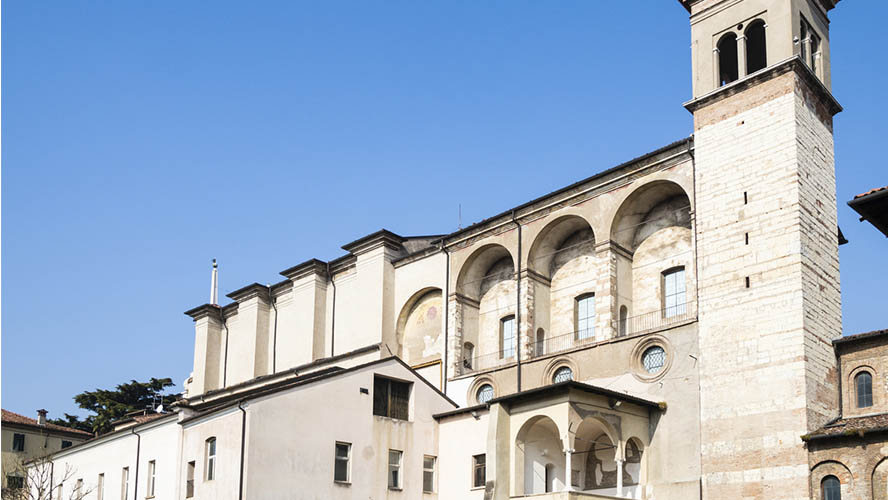
Duomo Nuovo (New Cathedral of Brescia)
Dedicated to the Assumption, the Duomo Nuovo was built in the 18th century under the direction of Pietro Maria Bagnadore. It stands in Piazza Paolo VI between the Duomo Vecchio (Old Cathedral) and Il Broletto on the site of a paleo-Christian temple.
Its imposing, monumental white marble façade has columns and a triangular tympanum, and is topped by figurative sculptures and the city’s coat of arms. The interior has a nave, two side aisles and a dome that is 80 m high, the third highest in Italy after St Peter’s in Rome (internal link) and the Duomo in Florence.
Duomo Vecchio or La Rotonda (Old Cathedral)
Construction of Brescia Cathedral began at the end of the 11th century on the remains of the winter basilica of Santa Maria Maggiore. It has two cylindrical superimposed bodies in stone and large arched windows.
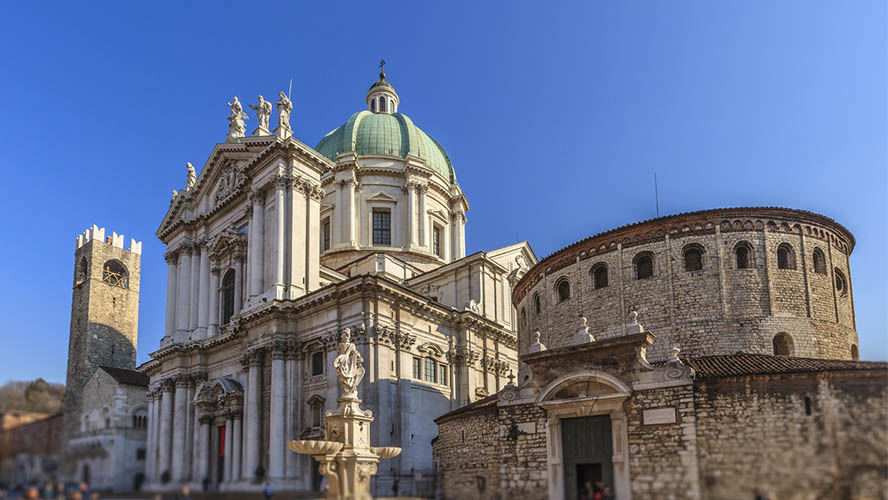
Brescia Castle
Built between the 13th and 16th centuries, this is one of the biggest and best-preserved fortresses in northern Italy.
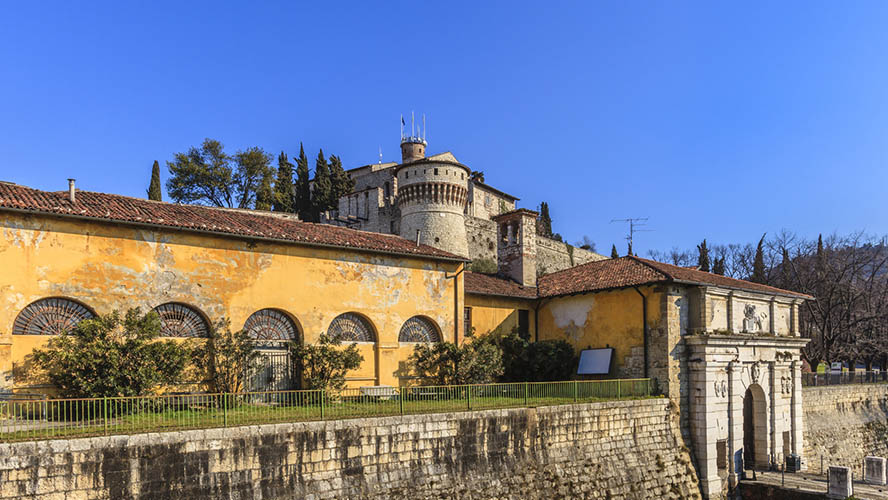
Brixia Archaeological Area
This archaeological site is next to Piazza del Foro in the heart of the old Roman city. Here you’ll find the Capitolium, a marble-clad Roman temple dedicated to Jupiter, Juno and Minerva dating from 74 BC that was built by the emperor Vespasian. A restored marble staircase leads to the podium. You’ll also see frescoes, low reliefs and a theatre dating from the period of Augustus.
Church of Santa Maria dei Miracoli.
This spectacular Renaissance church was built from 1488 onwards in tribute to the Virgin and Child fresco painted on the outside of a house that stood on this site.
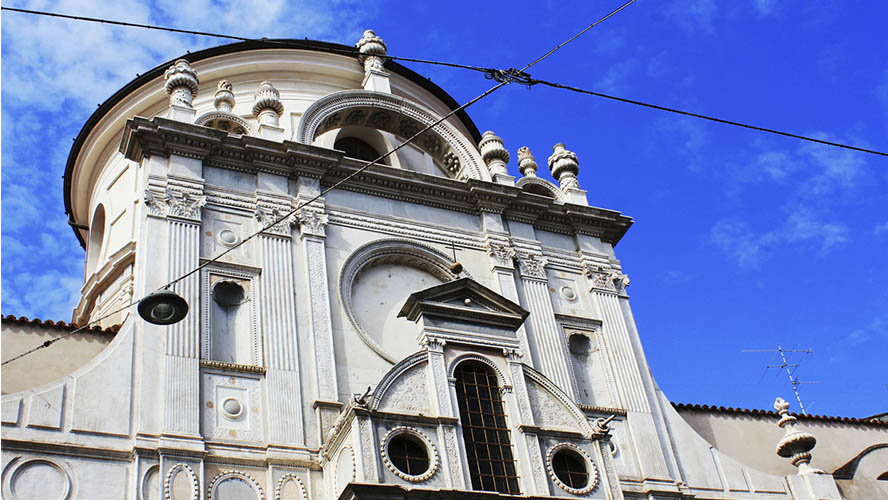
Piazza della Loggia
This rectangular-shaped square was built following the 15th century Venetian model and is home to the Palazzo della Loggia (today Brescia Town Hall): building work began on the palace in 1492 and it took 80 years to be completed. The Monte di Pietà buildings are the oldest in the square, and a Clock Tower (1540-1550) also stands here. It’s a Renaissance marvel and today hosts the city’s most important public events.
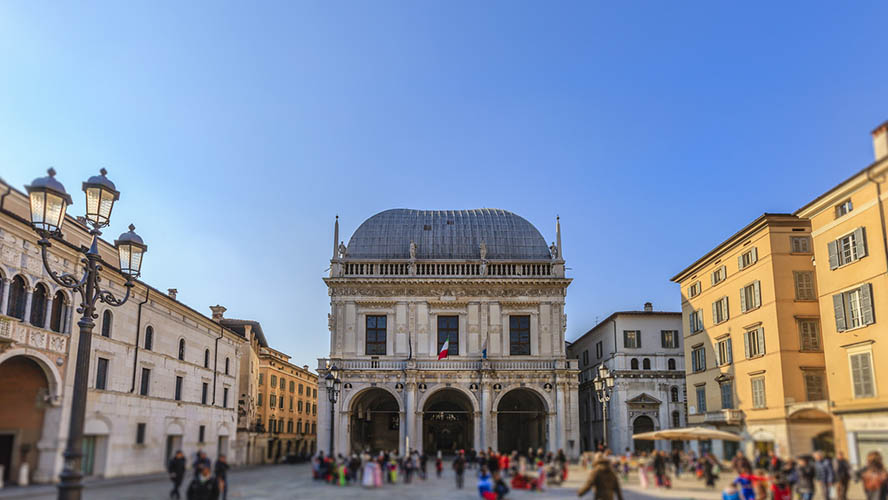
Piazza Papa Paolo VI
This space is the heart of the medieval city. Highlights in the square include the Lombard Palazzo del Broletto and its unique Tower of Pègol; the 11th century Duomo Vecchio (Old Cathedral); and the Duomo Nuovo, built between 1604 and 1825.
Pinacoteca Tosio Martinengo
This art gallery has 21 rooms that display important works by Raphael, Lotto, Ceruti, Canova, Canella and Pelagi, among other great artists.
Biblioteca Queriniana and Archbishop’s Palace
This library was founded in 1747 on the orders of cardinal Angelo Maria Querini, who donated it to the city. Architect Giovanni Battista Marchetti designed this huge building, which is entered via an atrium up a solemn staircase that has a domed ceiling decorated with frescoes.
Piazzo del Mercato
This square was built in the medieval period in a space that was opened up when the city walls were demolished in the 12th century. A cloth and linen market was held here, and its shops and porticoes date from the end of the 15th century.
A lake for Brescia
Brescia is just a short distance away from spectacular Lake Garda (internal link) and Lake Iseo (internal link). Both are well worth visiting to admire the fabulous villas and landscapes of each, so don’t think twice about making an expedition here. Enjoy beautiful Brescia on your trip to Italy, and learn a little more history as you unhurriedly stroll its streets and visit its monuments – Brescia has plenty to see!
